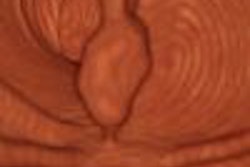Two groups of researchers at the 2001 RSNA meeting touted the benefits of multidetector-row CT for the detection of pulmonary nodules. In one session, investigators from Germany discussed how slice thickness affects MDCT scans in the early diagnosis of pulmonary nodules. Next, a group from New York City tested the effects of an interactive computer-aided detection system (ICAD) for examining pulmonary abnormalities in low-dose CT studies.
Thin-slice CT works best for small nodules
For their study, Dr. Frank Fischbach and colleagues from the Virchow Klinikum in Berlin, Germany set out to determine whether thin-slice collimation improved the detection of pulmonary nodules. Sixty patients underwent MDCT with collimation of 1 mm, and a reconstructed slice thickness of 1.25 mm in high resolution and 5 mm in standard resolution.
All of the images were reviewed by three readers, who noted the presence, location, and size of the nodules, but were blinded to the results. The study excluded patients with more than six nodules, and those with nodules that were larger than 3 cm in diameter. According to the results, as the slice thickness decreased, all three observers could detect nodules more easily.
The readers found pulmonary nodules in 25 patients. Twelve of these patients had more than one nodule; six had instances of disseminated disease. In total, the readers found 42 nodules. Twenty of the 42 nodules were 5 mm in diameter or less, 16 were smaller than 1 cm, and 6 were larger than 1 cm in diameter.
Although the readers detected 21 of the 42 nodules with MDCT scans rendered at both 1.25-mm and 5-mm slice thicknesses, the 1-mm slices were essential to the detection of 14 nodules.
The readers detected seven of the nodules on scans of 5-mm slice thickness alone. However, all of the nodules in the discrepant evaluations were smaller than 5 mm.
The researchers rated nodules missed on scans using 1-mm slice thickness techniques as blood-vessel misinterpretation.
"The quality-factor increase from thin-slice thickness is almost equal for (all three blinded) observers," Fischbach said. "The number of positive findings for small nodules is strongly enhanced by the slice-thickness decrease."
ICAD boosts radiologists’ confidence
In the second study, Dr. David Naidich and colleagues from the New York University Medical Center in New York City enlisted a trio of thoracic radiologists to prospectively examine 10 MDCT low-dose screening studies, using 7-mm sections. Potential nodules were identified and rated on a scale of 1-4 for the likelihood that the nodules were suspicious findings.
The readers then re-examined and ranked the images again corresponding to 1-mm sections using ICAD tools, including 180° cartwheel projections, maximum intensity projections (MIPS), flicker, real-time 3-D volume renderings, and quantification.
The likelihood ratings changed dramatically with the use of ICAD tools, Naidich reported. Using ICAD, the readers ranked 77% of potential nodules as "definite" or "excluded." Without the tools, the readers felt similarly certain for only 22% of the nodules. Only one rating changed due to the availability of thin-section slices alone.
"It complements a physician’s detection," Naidich said of ICAD. "The degree of certainty of our knowledge base dramatically improved. Perhaps most importantly, not just the degree of certainty that it is a nodule (was enhanced), but frankly, (so was) our ability to say uncritically things that we thought might be representing nodules that didn’t," he said. Using ICAD resulted in only 1.5 false positives per case, he said.
Naidich recommended ICAD tools as a way to reduce CT radiation dose while further improving certainty in reading exams. Physicians can seamlessly integrate ICAD with the MDCT workstation, he added.
"There are a lot of times we read images (in which) there are a lot of indeterminate types of things that we’re not entirely sure (about). But by using these tools, we can improve upon our degree of certainty," Naidich said.
By Leslie FarnsworthAuntMinnie contributing writer
January 25, 2002
Related Reading
MDCT imaging delivers higher organ doses than SDCT equivalent, November 27, 2001
Slashing CT dose in clinical practice, July 25, 2001
Copyright © 2002 AuntMinnie.com




















